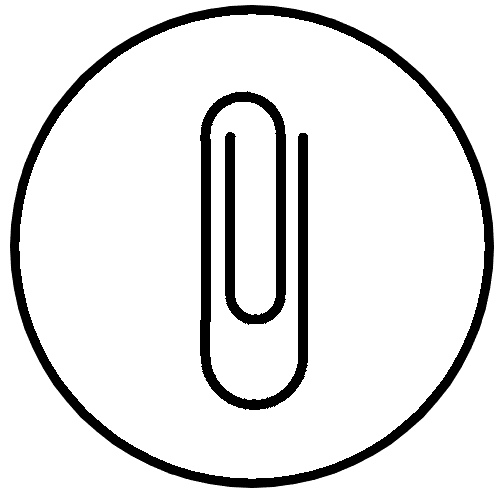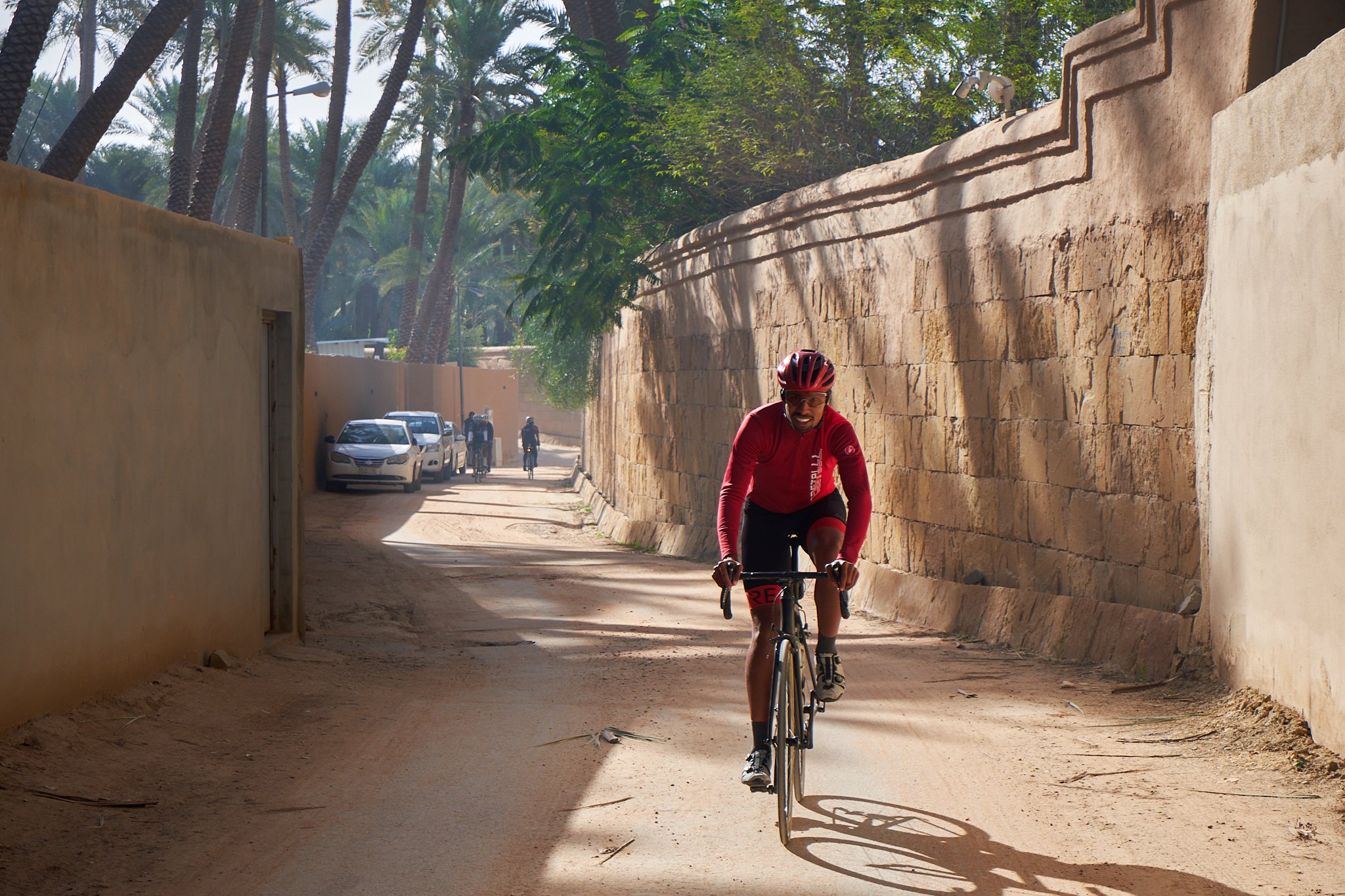Riders of Riyadh
5 months into the journey of rediscovering my neck of the woods, as a cyclist, I felt that I reached a ceiling as things became highly routinized. Riding the same roads, listening to the same music, eating the same snacks, and experiencing the same experiences.
So I was overdue for a quick trip to escape the mundane and get inspired by the cultures of our neighboring nations.
When I started the “Meet The Rider” project, I never expected it to become anything bigger than a few interviews here and there. But halfway through, I realized I had gone down a rabbit hole. It might be true that the wealth of the Arab world is hidden deep in the earth’s crust.
However, there were and still are much more valuable resources above the ground, shaping the region before any oil boom.
The spirit of Arab youth.
That same spirit lends many riders in Kuwait the hope they need to keep pushing against the headwind. The same spirit also reshaped the cycling scene in Saudi Arabia in a few short years.
Inspired by what I observed about the growth of cycling in Saudi Arabia, I researched various groups to reach out to. The one that stood out the most was Riyadh Pelaton, a fully-supported weekly drop-ride. After a few short messages with the admins, I knew I had to spend the weekend exploring Riyadh’s cycling scene with them.
I reached Riyadh after a 7-hour drive from Kuwait, and just as I expected, the invitations to join people for lunch, dinner, and coffee came rushing in via messages and from people on the street once they saw my Kuwaiti license plate.
Arab hospitality is truly legendary.
Riyadh is massive, with various terrains, climates, and subcultures. Following the advice of local riders, I stayed in the northwest, closer to the canyon lands and home to the oldest neighborhoods in the area.
There was a planned road race that same weekend. So what better way to get down to business?
Riyadh Wheelers | Race Day:
On a chilly Friday morning, I followed the masses heading into the canyonlands of northwestern Riyadh. Driving through a gully with palm tree farms as far as you can see until it all suddenly disappears. The road opens up as you climb above, and you can see the canyons running left and right.
“KSA Midweek” was painted on the road, and a few other encouraging words were all over the race course. Where was I? This can’t be Riyadh! But then again, that was my first time visiting the area, so I was surprised to see the blending of international cycling cultures with those in Saudi.
The race started in the canyon's shadows; the air was cold, but the sun was warm, and riders gathered for a quick welcome ahead of the start. The bell rang, and the A group was gone; the second bell rang, sending off the B group.
The course was a kicker, with steep hills, sharp curves, and open roads, effectively acting as wind tunnels. Seeing such strong riders zipping up those steep climbs past the herd of camels that had just crossed the roads under the warm desert sun was surreal.
I was beyond thrilled to see such a well-planned weekend race in a region that’s just emerging in the cycling world. To my surprise, the race organizers, Riyadh Wheelers, have been organizing local races since 1992!
I would say it's such an interesting “contrast” of cultures in one place. But after pondering about my mission to carve a seat for Arab cyclists at the cycling table, I would argue that it's one of the missing links of the cycling world. And there’s much more to discover around the world.
Watching that race and chatting with the locals brought back memories of the races I used to observe back in Portland, Oregon. People were there not just to race but to have a good time.
Riyadh Peloton:
I reached out to Riyadh’s Pelaton (RP) over Instagram to link up, and they came through. According to them, they are the most organized and fastest group in the city, and after riding with them, I can attest to that.
RP meets every weekend for a fast drop ride, usually starting from Almugaider, a small neighborhood of farms near the mouth of the canyon. I met up with them early Saturday morning, a quick brief about the route, and we were on our way north.
The scenery there was new to me as a cyclist. Riding alongside a dry riverbed that floods multiple times a year, under the shade of palm trees, and between rather huge farms with tall walls as if they were castles.
The group was strong, and the pace was fast, but the stoke to ride with RP and getting to know the locals was unmatched. I got to know the riders as we made our way through the canyon and small villages. Some have been riding for over a decade, while others started with the pandemic, but one thing in common was their love for the sport and the community behind it.
It’s quite telling. You can see and feel the positivity that cycling brought to the region. A collective of diverse individuals all riding together for the sake of riding. Some were champions, others were multiple-time Ironman winners, and some, like me, were long-time dedicated riders interested in adventures and long distances.
Riding through the canyon, we reached a small but punchy climb; as we descended to the other side and through the village of Sadus, the pace picked up, and so did the headwind. We regrouped and pulled each other as we fought the wind funneling down. That was a wild time trying to keep up with the heavy hitters.
At the turning point on top of the canyons in a gas station by the highway, things move quickly so that the legs don’t cool too much from the chilly desert wind. The wind picked up even more at that point, and the group got closer.
“Stay closer and push forward,” Rayan kept encouraging the riders who were struggling to keep up. Checking in on others and making sure we keep up the pace. Many of you in the western world would be quite surprised at the level of riders such as those in Riyadh’s Pelaton.
This was my first time rolling with them, but it won’t be my last.
At-Turaif District:
I met Abdulrahman, Haroon, & Ayoup Alansary, passionate cyclists in Riyadh during my stay. They were beyond gracious with their time to show me around town and introduce me to their cycling friends. When I asked them, “how should I spend my last morning in Riyadh?” they said, “Let's show you around our favorite old parts, then take you out for breakfast.”
How could I say no to that?
We met in the northwest of Wadi Hanifa, a 75-mile (120km) long fertile canyon once occupied by the early settlers. This oasis was recently restored to its natural state, and in some areas, it was even turned into state-of-the-art water treatment.
It is also the location of one of many mega projects in Riyadh; it soon will be home to one of the longest bike-run trails in the area, spanning across the Wadi.
Although I loved every minute of my time in the city, Wadi Hanifa was the cherry on top.
Saddling up early at 6:30 am, we rolled into the canyon alongside the dry flashflood waterway. It was a very chilly morning, especially starting in the shade. However, as cold air settles at the bottom, the warm air still moves above the canyon. So when we made it halfway up the canyon, a sudden, and I mean over a few seconds, temperature shift happened. A rush of warm air moved in to replace the cold.
Quite surreal.
Once we reached the canyon's end, we turned around and went back down towards the Wadi. Having that checked off the list, we made our way towards the historic district, where a UNESCO heritage site is located. Although most of the area is buzzing with renovations and construction, you can’t escape the traditional spirit in every corner and even in the newest designs.
Wadi Hanifa is home to At-Turaif district, the birthplace of the kingdom of Saudi Arabia, and home to the mud city where AlSaud and the settlers lived. Riding through the area, I could understand why this location was prime. It's an oasis filled with palm trees and occasionally fresh running water since the Wadi cuts down to the water table.
We spent the bulk of our time just riding around the recently renovated parts of the area, and the extent the city went to preserve its identity is evident everywhere, even when designing new modern infrastructure such as bike and running paths. As we cycled between historical farms and old buildings, their more contemporary counterparts seemingly blended in, thus pulling together the whole area and not disturbing the harmony of the past.
The group was keen on taking me to see “the” view. A terrace looking over the 15th-century mud city once home to the ruling family.
The heritage site of Ad-Dir’iyah was indeed a site to be seen.
Just as I thought our ride was ending, Abdulrahman pulled me to the side and said, “get your camera ready; you’ll love this road,” He was not wrong. In fact, I shot my favorite photo of the trip there. Abdulrahman took us down a tight backroad through a forest of palm trees and mud brick walls. “I just can't get enough of this, with the dancing palm trees and the breeze rushing through this narrow corridor,” said Abdulrahman.
I got goosebumps from that scene as if I had entered this area untouched by time, and perhaps I did travel back in time to that same oasis that gave birth to this nation.
I planned very little for this trip, and this was probably the best thing I could’ve done. I put my trust in the locals, and they welcomed me as one of their own, or as they always said, “welcome to your family” mind you, all of the riders I met during my trip were complete strangers before I set foot into Riyadh.
So If there’s one take from this write-up that I want to send out into the world, it would be not to judge a book by its cover. My trip to Saudi was quite eye-opening and inspirational, which is exactly what I needed.
























